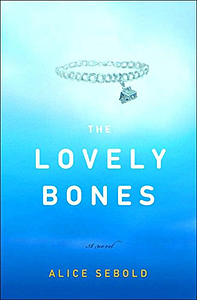
My name was Salmon, like the fish; first name Susie. I was fourteen when I was murdered on December 6, 1973. In newspaper photos of missing girls from the seventies, most looked like me: white girls with mousy brown hair. This was before kids of all races and genders started appearing on milk cartons or in the daily mail. It was still back when people believed things like that didn’t happen. [opening paragraph]
— Alice Sebold, The Lovely Bones
I saw the movie based on this book about a month ago (review here), and it piqued my interest in reading the book. I finished the novel earlier this week – it’s a quick read, about 300 pages and not too dense.
Great literature? No, but a very well written (for the most part) book based on the eerie/macabre premise: The book is upfront in telling the reader that the protagonist is going to die almost immediately, and the book is told in a first-person narrative by the deceased teenager from her perch in “in-between land” (not quite Full Heaven, but certainly not earth).
In the book, the narrator – Susie – has some interactions with those she has left behind on earth: A schoolmate who encountered Susie’s soul as it was leaving her body to go to heaven; her father, who can’t quite admit she is gone; Ray, her first love, her first kiss. She watches them, tries in some cases to make connections with them, is happy with the achievements they keep rolling up after her death, tries to let them go.
The story moves along at a good clip, and a lot of it reminds me of Hispanic literature, where the supernatural is part of novels in so many cases: One Hundred Years of Solitude, Like Water for Chocolate and others. Just about any Jorge Luis Borges story.
The book is about relationships, motives, how we live our lives and letting go.
It’s also reminiscent of Winesburg, Ohio – with the small subdivision taking the place of the small Buckeye State town. There are secret – and not so secret – parts of peoples lives. Some live out loud – such as Susie’s madcap grandmother. Some live lives of quiet despair – Susie’s father, the detective who is unable to solve this and other cases, and the mother of Susie’s first love Ray, Mrs. Aruna.
And some – like Susie – are taken before they can even begin to understand life.
Entertaining, at times extremely poignant, the book far surpasses the movie, and I enjoyed the movie, even though it was, except on base structure, very different from the book. If you’re interested in the book/movie, I recommend experiencing them in the order I did – movie, then book.
